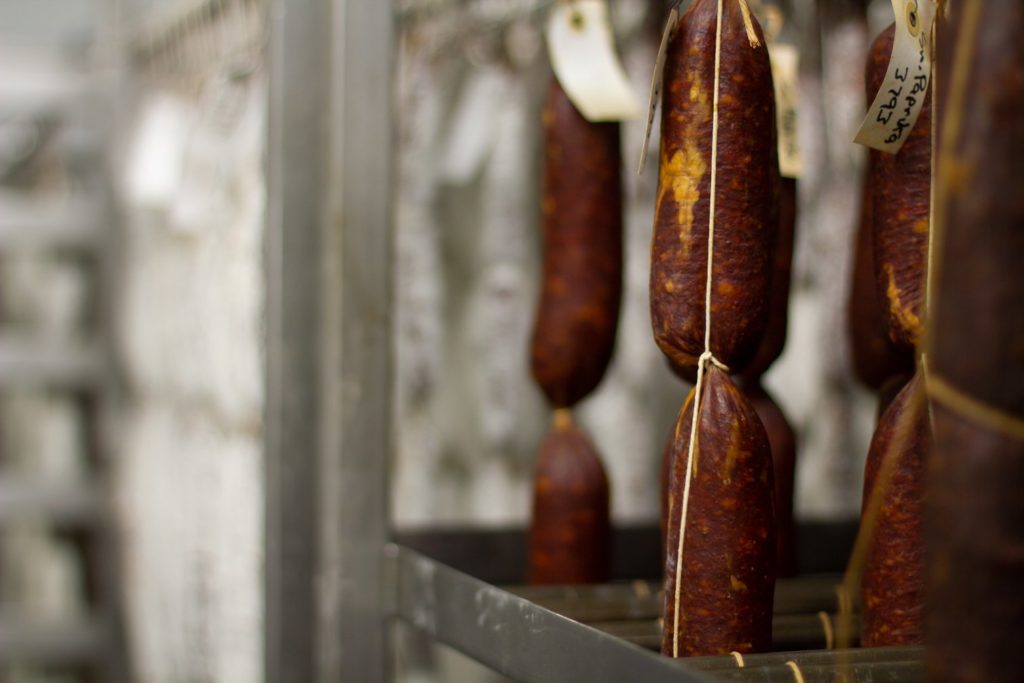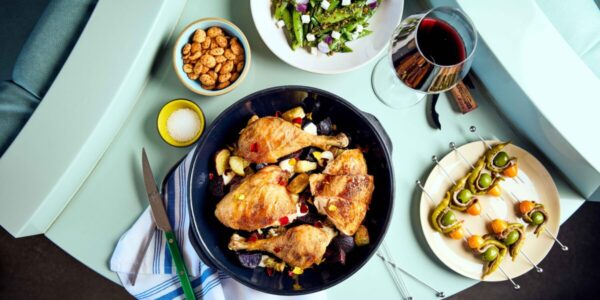
Beers, Brats, and Truffles: Visit a German Mountain Town Without Leaving the West
Leavenworth, Washington matches a welcoming Bavarian town with its beer, food, and charm.

Driving through miles of Pacific Northwest pine, you come to a fork in the road labeled by a sign that reads “Willkommen.” Below it is a small mountain town with streets hugged by vintage lampposts that light up buildings designed like German farmhouses. The wooden structures are identified by signs written in a Fraktur font. In the town square, a polka band plays traditional Bavarian folk music while people sip at the biergarten next door. Willkommen to Leavenworth, Washington.
A number of European countries have closed their borders to Americans, with others allowing vaccinated U.S. citizens to enter with certain COVID-19 restrictions. Some of us may not be traveling across the pond anytime soon, but we can still get European-inspired dishes, scenery, and architecture right here in the West. Just two hours outside of Seattle, you’ll find Leavenworth, a traditional German mountain town hidden on the foothills of the Cascade Mountains.
The city has not always had its distinct Germanic flair. In 1890, settlers arrived in the town, then called Icicle Flats, in search of fur, gold, and timber. A decade later, a railroad was introduced, the logging and sawmill business flourished, and the town experienced a period of prosperity. This success came to a screeching stop in the 1930s when the railroad was re-routed and the town fell into an economic decline.
It was in the early 1960s that Leavenworth got its distinct style. The town leaders decided to reinvent it to attract tourists. Inspired by the alpine hills that hug both Leavenworth and German Bavaria, they decided to design the city after three German towns: Bemalte Fassaden, Leipzig, and Munich. Today Leavenworth is bringing German authenticity to more than 2.5 million visitors every year.
The town’s exterior may be first to give away Leavenworth’s German roots, but it’s the businesses (and business leaders) that hold the town to Bavarian standards.

Courtesy of the Leavenworth Nutcracker Museum
Standing as one of the largest collections of its kind in the world, Leavenworth’s Nutcracker Museum is home to 7,000 nutcrackers. The collection started by pure accident when dance teacher Arlene Wagner was in search of the perfect Clara for her Nutcracker ballet. Arlene’s search led her to a number of nutcrackers that served as the basis for her collection. Arlene and her husband, George, moved from Seattle to Leavenworth where, shortly after, the museum was born.
Regarded as a Christmas tradition, nutcrackers date back to the third century B.C. but the original commercial nutcracker was crafted in 1872 by Wilhelm Fuchtner, a woodworker from the town of Seiffen. You can see one of Fuchtner’s original works, a miner from 1880, in the museum. You’ll also want to check out a 6-foot tall Bavarian beer-drinking nutcracker that was carved in Germany by Karl Rappl that serves as the museum’s mascot.
On the sweeter side, you can head to an authentic European chocolate shop, Schocolat. The shop was founded 14 years ago by married chocolatiers Damien Brown and Suzie Johnson. When you walk through the doors, you are transported to a place of pure imagination. “The staff is dressed in button-up collard shirts with glass mirrors and chandeliers that give the feel that you’re walking into an elegant jewelry store in a German village,” says Andrew Demoss, operator head of Schocolate, also married to head chocolatier Charissa Demoss.
More authenticity lies within the Belgian truffles. Even though they are classified as Belgian, these truffles are a common European treat. Unlike American chocolate, which has a nutty and caramel taste, the Belgian truffles have a melt-in-your-mouth consistency and can be found in shops throughout Frankfurt and Munich. One of Schocolat’s most popular desserts is seasonal beer-infused chocolate which comes out the last week of September and is sold through the end of October. Also notable is the Bavarian milk, which consists of milk thickened with eggs and gelatin or isinglass into whipped cream that is then folded.

Courtesy of Heidi Forchemer
Down the street, if you stumble into eatery Andreas Keller, you’ll hear the whistle of a Steirische Harmonika, a diatonic button accordion, and yodeling. The restaurant was opened by David Forchemer in 1989 and today it is owned and operated by his daughter, Heidi.
“My father traveled during World War II and fell for Germany, not only because of his German background but because he loved energy found within German restaurants where the food was always good, clean, and there was music blasting through with people laughing-out-loud,” says Heidi.
Her father inspired the opening of the business but her mother motivated her to keep the dream alive. “My mother was from Bavaria but passed away when I was only 8 years old,” Heidi explains. “Growing up, I was sent to Germany along with my sister to spend time with relatives. This started my love affair with Bavaria.” It was during her time abroad that she dined in restaurants and ate schnitzel, potatoes salads, and spaetzle, or as Heidi would classify it, “hearty, stick-to-your-ribs farmers food.” These are the moments that inspired the menu at Andreas Keller.
The kitchen is run by head chef Anita Hamilton, a German immigrant who uses her roots to “influence the depth and homestyle quality of the food,” says Heidi. Hamilton is “more American than me because she came to America and embraced the American culture, while I was born in American and embraced the Bavarian culture when I lost my mother.” Heidi tells me. “It brought us together to create this wonderful family collaboration and the ability to share our cultures with the town.”

Courtesy of Stein Leavenworth
Of course, a Bavarian town could not be complete without a German beer hall. Stein Leavenworth features more than 55 beer taps and a variety of wine and ciders. The layout is similar to the same setup you would find at Oktoberfest: come-as-you-are self seating with community tables that promote communication and laughs with your neighbors. Carl and Gavin Evans, the father-son duo who own the beer hall, spent three weeks traveling through Germany for inspiration. The beer hall features German beer, like the kostritzer schwarzbier black lager, which is rather hard to find in the states. It also features a variety of beers locally brewed in the Pacific Northwest.
To top it all off, we have the king of German delicacies: the bratwurst. Cured by Visconti was crafted out of a smell that Daniel Carr chased since his childhood. While growing up on a farm, his grandfather cured and smoked meat for the neighbors, who brought over animals as a form of payment. He experienced that same smell walking by a small Italian meat shop. “I opened the door and saw my grandfather in that shop,” says Carr. It was then he decided to bring fine meats to Leavenworth.

Courtesy of Cured by Visconti
Visconti practices the traditional European art of persevering meats. “I wanted to create a bratwurst that tasted like Munich bratwurst from a beer garden,” says Carr. To do this, he opts for using the Old World method of sausage preservation which uses a bowl cutter instead of a meat grinder. Using this method creates “a more straight cut, textured difference while the whole ground sausage is softer with individual pieces of meat going unnoticed because they’ve been mushed together,” Carr adds.
He describes the difference as “eating a steak versus a burger, with a steak being a solid version of a ground-up hamburger.” He also uses a traditional slow, low-temperature cook process so the fat doesn’t melt. “When you reheat our sausages it is the first time the fat will melt, so it’ll taste fresh as if you’ve just grabbed it from a sausage stand in the middle of a beer garden.”
Pack your bag (but not your passport) and enjoy the Bavarian wonders that the city has to offer. From bratwurst to biergartens, Leavenworth is sure to give you a European fix right here in the West.
